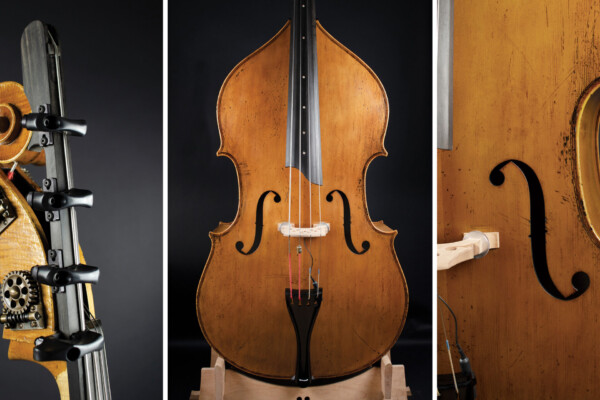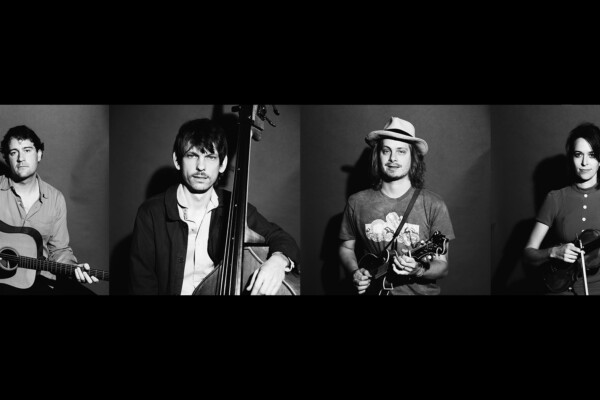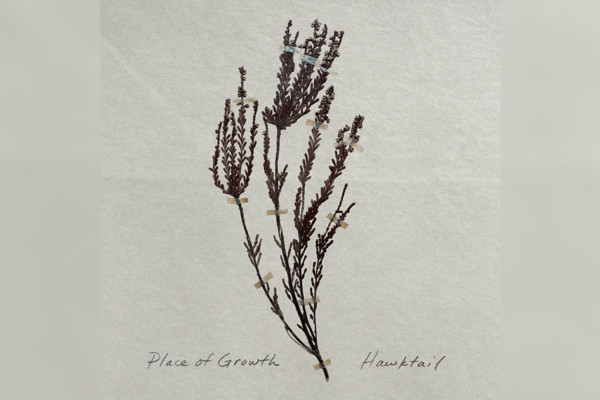Formations: An Interview with Paul Kowert
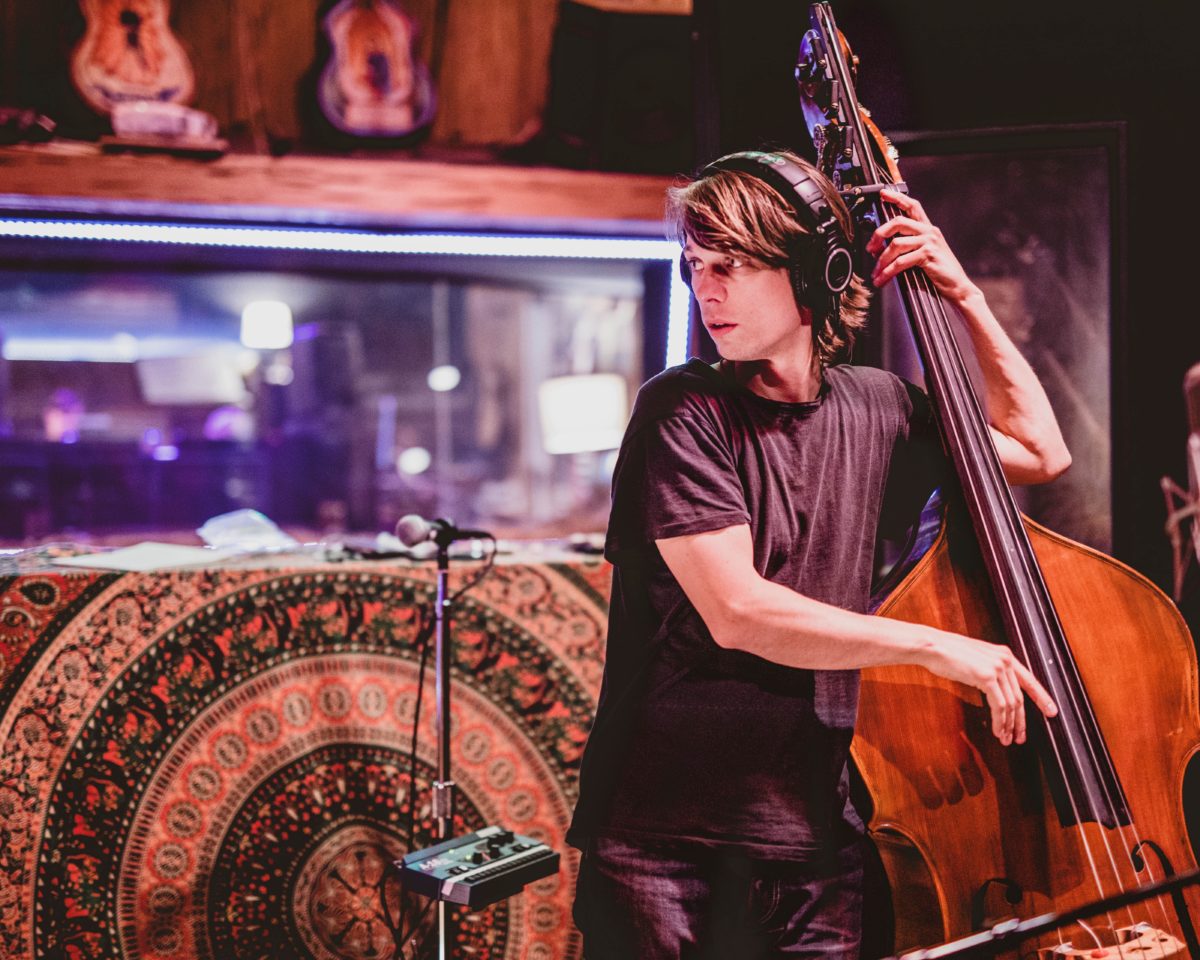
When Hawktail booked studio time for last year, their plan was to make an album of covers. The quartet – consisting of fiddler Brittany Haas, guitarist Jordan Tice, mandolinist Dominick Leslie, and bassist Paul Kowert – no doubt would have done justice to whatever songs they picked. Luckily for us listeners, they decided to pull together their own material for their new album called Formations.
“We had studio dates to record a quick EP of covers, arrangements we’d been playing live,” Kowert says, “But we had these strong starts that felt so good that we were like ‘let’s finish THESE instead.'”
The result is a near-perfect album of instrumental bliss, but that’s not really a surprise given the talent level of each band member. Kowert, who is a former student of double bass virtuoso Edgar Meyer, is also the bassist for the Punch Brothers. That band has released four albums and contributed music to “The Hunger Games,” “This is Forty,” and “Inside Llewyn Davis.” He’s also performed with David Rawlings and Mike Marshall’s Big Trio.
It’s easy to see why he’s so in demand. Kowert’s amazing technical facility and clear tone let him easily convey his highly melodic ideas. And just because he can take a solo to match any instrumentalist doesn’t mean he doesn’t love driving the band with a straight-forward bass line.
We caught up with Kowert to get his thoughts on writing for the quartet, what he looks for in a bass, and what he calls this new genre-bending music.
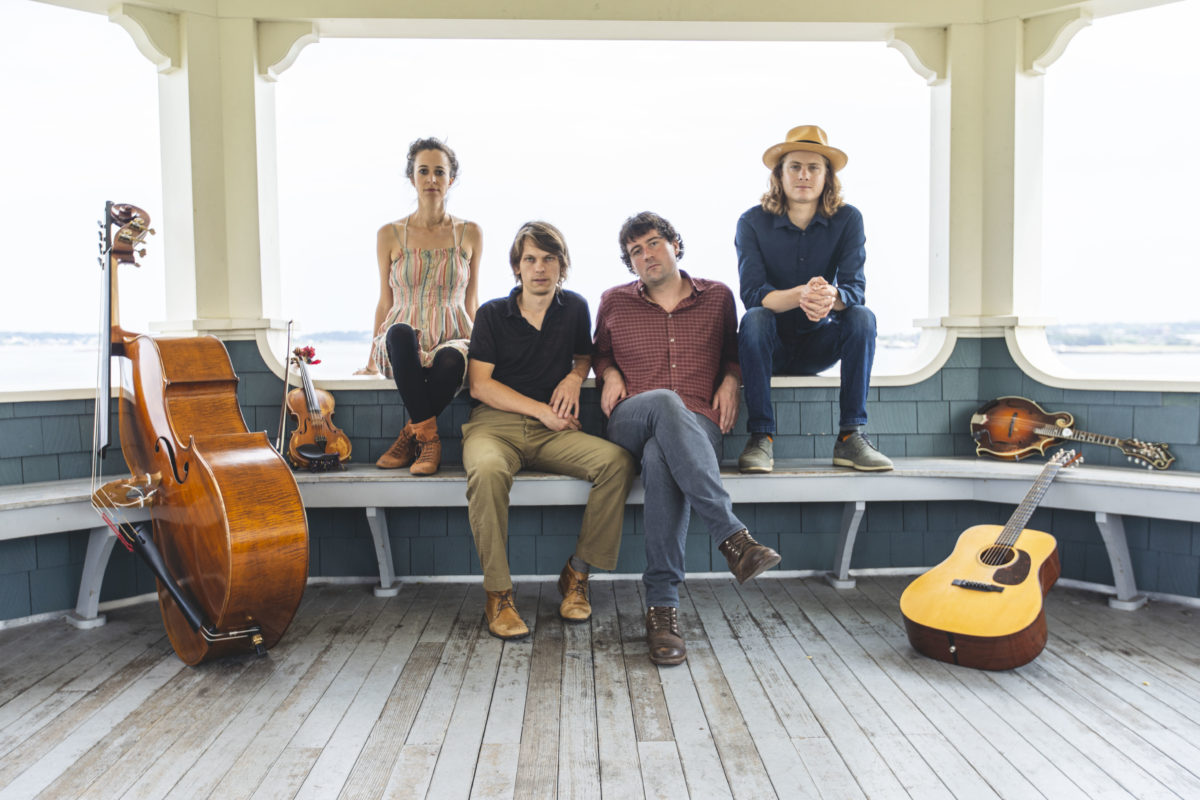
If you were going to introduce Hawktail to someone who hasn’t heard it, what would you say?
We’re an instrumental folk band drawing on fiddle traditions from America and Scandinavia as well as other folk traditions. We write our own music, mostly, and they’re sort of constructions that take the listener on a journey. It’s concert music.
When I was listening to Formations, it reminded me of chamber music in the way you interact with each other. How do you feel this album is different from Unless?
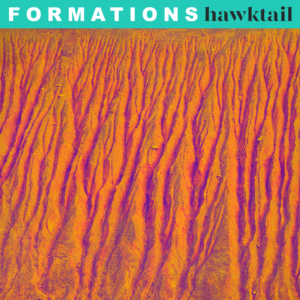 Most notably, the mandolin was there at the inception of the music, as contrasted with Unless where we had written all the music and then added Dominick and found him a part. This record was conceived with him in mind. There was sort of a goal to utilize the rhythmic strength of the mandolin, which can afford us robust music that would be fun to play on festival stages.
Most notably, the mandolin was there at the inception of the music, as contrasted with Unless where we had written all the music and then added Dominick and found him a part. This record was conceived with him in mind. There was sort of a goal to utilize the rhythmic strength of the mandolin, which can afford us robust music that would be fun to play on festival stages.
I feel like this album has an ethereal quality, but it’s also driving because of the mandolin. For example, the first track “Annbjørg” has all of that. Where did you get the song’s title?
It’s named after one of our favorite fiddlers, Annbjørg Lien. She Norwegian and plays a Hardanger fiddle. She’s a great artist. On her records, she has fused some of the Norwegian Hardanger tradition with the sound of drums and bass in a really cool way. That’s what we were doing with that track.
What’s going on time-wise during your bass feature/solo? I couldn’t quite count it out correctly.
It’s just in four, but it’s kind of tricky. It’s taking the rhythm from the B section of the tune and making a theme out of it by cycling the hits in a new way. So it’s completely in four, but the hits will throw you off.
Are you the primary songwriter or is a it a group effort?
It’s sort of both. On this record, I did more of the writing than on our previous record, but it’s also highly collaborative; some songs more than others. “Annbjørg” is quite a collaborative number. Brittany came up with the melody. I came up with the bass line and the rhythmic concepts of that tune, and Jordan really helped with the form. Dominick really brought a lot of life to it with the mandolin.
When you’re writing, do you think about arranging or do you come up with the concepts and let each player fill in their own role?
It’s different on different tunes. Sometimes we’re really specific about what everyone needs to do. The second track, “The Last One on the Line,” is sort of a bluegrass number that allows everybody a lot of license to stretch out and do what they want. We understand our roles within that context. There you can have a melody and chords than just an arrangement of who plays when. Besides that, everyone is free to play how they will. Similar to “The Tobogganist.” That’s just a fiddle tune. It’s really ground zero for us as an ensemble. We met at festivals and music camps where we would jam late at night on tunes like that. It’s like riding a bicycle in a way. You know the chords and melody, then you’re ready to go. On tunes like “Annbjørg”, we had to know exactly what we were doing to combine and create a complete sound together.
There are some points on the album where it sounds almost orchestral from the arrangements.
If you have balance in the ensemble and everyone has their own space, you can really achieve a large “orchestral” sound, as you say. Four parts that are truly different is a lot. Even though you only have four people on stage, you can create the illusion of much more.
How did you all record it? In the videos, you’re in a circle with some mics.
Well, this album we recorded differently than our first one. This time we were in complete isolation with headphones, where on Unless we didn’t use any headphones. There were three live tracks on that, too.
Do you prefer one recording style over the other?
I think the isolation suits this material. Like I said earlier, we were writing with the goal of creating robust material. Isolation can sonically help achieve that sound. The material from Unless is a little more chamber-y and folksy. Tunes like “Unless” and “In The Kitchen” are about relishing the beauty of the fiddle playing a melody in a room. That wouldn’t be as achievable in an isolation booth like we had Brittany in for Formations. That was achieved in a very large room – a church sanctuary. You can hear on the microphone the resonance of the fiddle in that large room. It also inspired her playing by hearing it in that room. That suited that music. This music hits a little harder, so isolation suits it better.
Do you have a preferred method of recording your bass?
It’s a collaboration with the engineer and I give them a lot of trust. Dave Sinko has recorded all our records so far. He’s a veteran of music and knows our instruments very well. I can trust him, but I always need to be involved, somewhat.
I know you’ve got a pretty detailed list of your gear on your website. Is that still pretty accurate?
It’s probably pretty close with one notable difference. I’m playing a Shen, which is a Chinese-made and affordable instrument. It has a plywood back and sides. I used it on Formations, and I’ve been playing it a lot recently. It sounds good in the tuning I use when I play instrumental music, which is slightly higher. I have a very fine instrument by Dan Hachez, but it sounds better in standard than solo tuning, in my opinion. I leave it in standard and when I play solo tuning I play the Shen.
I’m kind of surprised by that. I have some students with those, and they can sound good but it sounds really great on the record.
Thanks. You know, when you’re putting a microphone on a bass, you can still hear the quality of the instrument but you can also manipulate it. Some people say plywood basses record nicely. Let me say it this way: this bass does sound good to my ear in solo tuning, but beyond that, I was pleased when I first heard it on a microphone. How it treats a microphone is different than how it treats an ear standing some distance away from the bass. The microphone is closer and lower, and it hears a little different than ears. When you’re recording bass, it’s not just the bass. It’s the microphone and the gear and everything else. Some basses record better than others regardless of how it sounds in the room.
When you’re trying out double basses, do you think about them in terms of classical versus jazz? What makes that difference to you?
Yeah, for sure. Setup is [a] huge [factor] and that’s a frustrating reality. You might not always know what you have in your hands. This Shen bass I play is very bright. Edgar Meyer is a real hero of mine and a lot of the way I use the bass in Hawktail is very influenced by the way he uses the bass in an ensemble. His bass is so bright. The brightness of this bass is part of what makes it sound good with solo strings. Another bass might have a really good punch rhythm in just the right frequency range so you feel you can drive a band. One bass might have really good sustain, which would be great for ballads and “singing” pitches out of the bass. That’s utilized in jazz a lot.
So basses are different. Great basses all have different strengths. I played a bass recently that I really liked. The guy selling it was calling it a jazz bass, but it’s nothing like Charlie Haden’s bass. It’s just what you do with it and how you want to play.
Speaking of Edgar Meyer – do you think there’s a specific takeaway from studying with him that really changed the way you play?
Sure, there are too many to enumerate. When I was 15, I began absorbing everything I could from watching DVDs of him from Appalachian Journey and then Music for Two with Béla Fleck. I made transcriptions of his playing and watched the DVDs to get fingerings and bowings. I started to try to understand the choices he made and how he sounded as a result. Studying with him at Curtis was just a dream. In terms of playing the bass and having a clear voice on the instrument, there’s nobody like him.
I should define a clear voice. There are lots of bassists who have strong voices, like Ray Brown, Christian McBride, Paul Chambers, and more. I mean clear in a literal sense: getting the instrument to speak like one of the other string instruments. He can make the bass enunciate and act as a lead voice.
One thing that’s interesting about your playing, as well as Edgar’s, is that you go from “simple” playing to virtuosic playing all in the same tune. Do you think about that much or do you try to focus on the song?
I think you’re perceiving what others have noticed where on one hand you have a lot at your disposal with your hands – I can jump out of the band and play a solo with bow or fingers – but then I’ll land back down on the ground and play very simply.
I think that comes from a musical taste. I certainly picked up on that from Edgar, but also other bass players who may have influenced him that way like country bass playing and guys like Roy Huskey, Jr. He certainly knew how to lay down something simply so you have a foundation, and that’s what the bass is bringing to the band. It allows other instruments to occupy a role that the bass isn’t taking.
To say it more simply, it’s a taste for having the sound of the band be compositionally transparent. You might listen to Jaco Pastorius with Weather Report. He’ll be playing bass, but it will be full of improvisation and character at every second. It draws your ear to it. I do that sometimes, but more often I’ll prefer to offer a very simple contribution when I’m playing the role of the bass. Partially that comes from not having a drum set on stage. When you have a drum set, the drums will take over the rhythmic responsibility and let the bass be free to play all sorts of things. You hear that in Motown with James Jamerson. His playing is grounding, but if you take the drums away it wouldn’t sound as grounding.
So it’s a taste thing, but also a question of how the music works. If you think of a tune like “Annbjørg,” it’s imperative for the sound that I stick to my part as a bass player when I’m supporting the fiddle melodies. It’s how the music is conceived.

